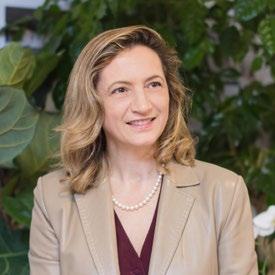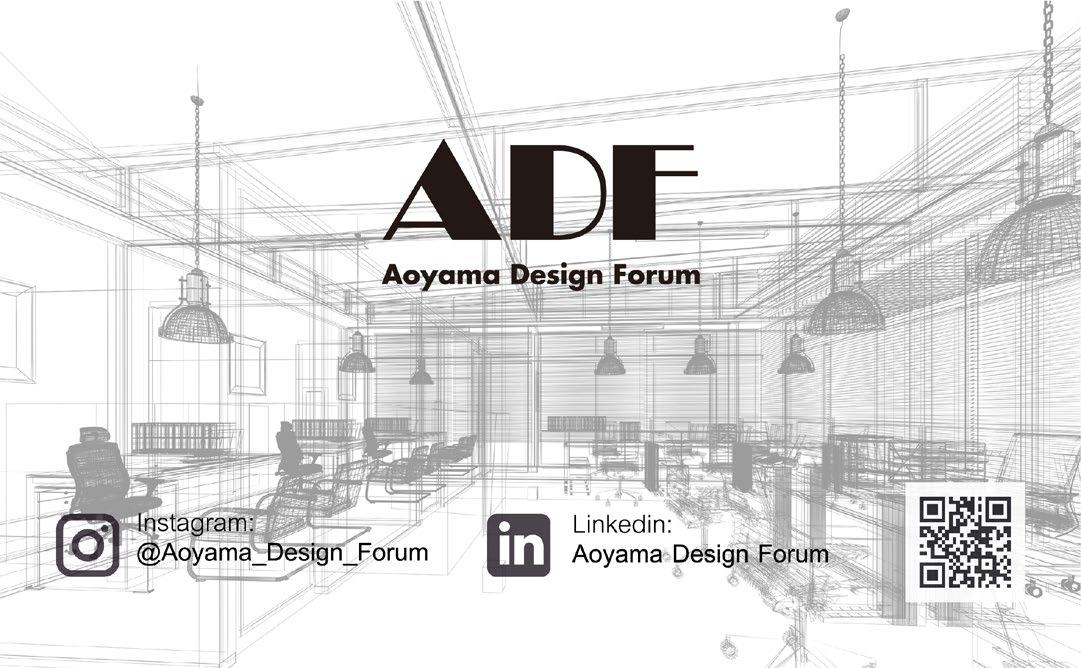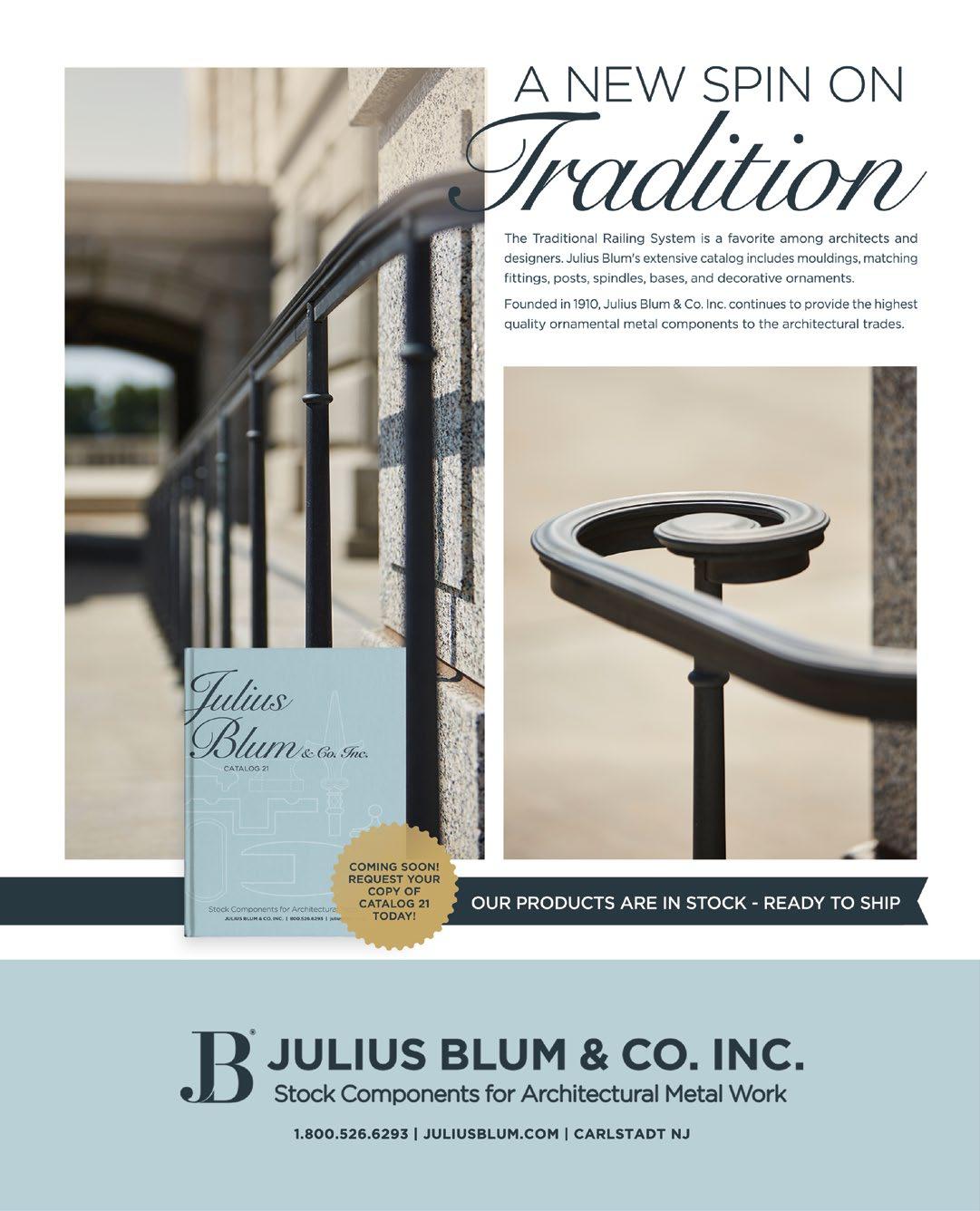
12 minute read
Architecture – Making ‘Joy in Learning’ Tangible through Engagement, Nature and Versatility
3
ARCHITECTURE – MAKING ‘JOY IN LEARNING’ TANGIBLE THROUGH ENGAGEMENT, NATURE AND VERSATILITY
by Dr. Christine E. Bruckner, FAIA, HKIA, R.A., HKIUD, LEED AP, BEAM Professional, BREEAM AP, RESET AP Fellow, WELL AP WELL Faculty, Fitwel Ambassador, LBC Ambassador, BG-EHP, Past President AIA International Region Director, M Moser Associates
“Fantastic insights”
– Illya Azaroff, FAIA, AIANYS President
– Tom Ferrara, PE Director of Facilities III,
Syracuse City School District
- Tom Ritzenthaler, AIA, Vice President,
CSArch Dr. Christine Bruckner, FAIA jump-started the four-week AIANYS Reimagining School Design series, held back in April of this year, sharing spaces that ignite creativity, empower students and create vibrant, safe, interactive communities.
Among her credentials as an architect and Director at M Moser
Associates; Past President of the AIA International Region,
IWBI Faculty, she has decades active with school designs and facilities committees as a parent, educator, architect, energy consultant and environmental steward. More than anything, it is her passion and conviction in the power of architecture to help people meet and exceed their potential by shaping a healthy, joy-filled, sustainable future.
For more on designing for Joy in schools see Christine’s article in Britain in Hong Kong (Issue 53.2).
Dr. Bruckner revisits three of the key topics shared in her presentation during the Reimagning series: joy and wonder – integration with nature – adaptability towards 100% efficiency.
Thank you to AIA New York State, New Jersey, Pennsylvania and the School of Facilities Management for hosting this critical series on Reimagining School Design and for the opportunity to share and help co-create the interactive workshop portion around the question, “As we emerge from
Covid-19 how do we make schools more joyous?”

Together, we reimagine | students enjoy time sharing ideas in the M Moser Assocuates office | inspiring one another!
The importance of infusing joy into our learning environments and lives at all ages is paramount. For students, teachers, administrators, operators, architects and all stakeholders, the first step is to work together—to be involved and engaged. The sense of empowerment and excitement that comes from creating one’s own environment is palpable and leads to an essential sense of belonging—the joy of community (and to some fabulous ideas)!
JOY THROUGH ENGAGEMENT
The delight that stems from finding one’s voice can lead even our youngest to thrive with wonder and acceptance. Like any healthy discourse, every idea serves as a critical steppingstone to the next insight. Some ideas may present ahead of their time like this one: ‘Let’s make the roofs all clear energy rechargers so we can see the sky and power the school with the sun’—excellent, creative direction. We are pursuing research with flexible, transparent graphene solar panel solutions and training as a firm in bespoke integrated Daylighting Design analysis to scientifically maximize circadian lighting for optimal health and learning outcomes. In the meantime, in every school and space we craft, we make sure: the sky is visible through building form, clerestory and skylight, all learning spaces are filled with natural light, and solar panel arrays are incorporated to provide power and teach about renewables. Another student idea, ‘let’s make every wall inside and out climbable.’ This may inspire queries about safety, usability and practicality. For a Middle-school design we embraced this idea and found ways to make school walls inside and outside safely climbable. In doing so we further integrated the design with curriculum and created pure joy in design and anticipation. Kids couldn’t wait to play in, and on, their school. This process of creativity pushing beyond limits and actively engaging students of all ages, is an exciting part of reimagining school design for us as architects. More rewarding still is the pride, wonder and excitement on their faces when we show how ideas are implemented and delivered, and the eruption of joyful applause at the sheer delight of their collaborative innovation. Countless endearing stories of engagement impact the architecture from structural and acoustic details, construction, furniture selection and environmental responsibility. Inclusive loud spaces; whole school-wide lunch hour; harvesting roof gardens; micro-movement furniture incorporation to support focus; and writable walls and desks to enhance collaboration, learning and support zero waste initiatives. We get to work together with collective action and decision-making to share and implement net zero directions, health promoting prioritizations and inclusive, restorative solutions for school environments.
The process of reimagining is one of continuous innovation and implementation.

Mobile study pods for curation | moveable walls and sit-stand furniture | indoor outdoor integration | writable wall and desk services - LPC

INTEGRATING NATURE
Another facet of inherent joy is our human connection to the natural environment. Research shows that people learn better, test better, feel better and live healthier when they have ample day light, fresh air and connection to nature. Biophilia – love of nature - is imperative to incorporate as we reimagine our school environments. Just as the buildings and campuses that we shape, in turn shape the lives, behaviors and learning successes of those who study within, so designing the right learning environment is key to educational success. Creating places that ignite creativity and provide a blank canvas for thinking. Proportioning restorative environments imbued with nature. Providing the calm necessary to nurture and engage flow. When all wellbeing needs are met, a school can serve as a teacher and effectually support students in reaching and exceeding their own potential. As the COVID-19 pandemic continues to rise and fall across the globe, there are multifaceted psychological and physiological challenges we now face. From pandemic-related stress syndrome to Zoom fatigue, combined with the ongoing impact of a global climate crisis, new health and wellness issues are coming to the forefront. Purpose, resilience and adaptability are taking on new meaning.
Replacing the old paradigm of ‘cells, bells and scores’ to completely reimagine a school as a healthy, wonder-pro-
voking, ever-adapting, park-like environment. One which simultaneously delivers measured filtered fresh air, glare-free daylight*, acoustic provisions, views, greenery and naturally healthy materials from timber* to textiles. (*for more on the importance of wood in design link here - http://www.ahec-china.org/a-look-at-the-intangible-benefits-of-designing-with-wood-for-human-health-mental-wellbeing-and-planetary-stewardship/¬) ;for more on design with daylight link here - https://gbdmagazine.com/ask-the-expertwsla-insights-christine-bruckner/) We share lessons on the healing power of architecture from our large-scale campus designs– for versatility, access to nature and connectivity – bringing to life a multi-level, inside-outside oasis for collaboration and discovery. Vibrant campus designs define internal green environments which enhance the surrounding spaces and create a collective community center. Careful consideration of new-buildings combined with revitalizations pave the way for multi-building schools to integrate internal entries, proximate greenery, transparency, connectivity, safety and fluidity and enhance the character of their own unique built communities.
AIR IMPACTS
Nature-integrated campus designs encourage physical health and movement, while providing for diverse educational environments and increased fresh air. With children ready to return to school and a need for increased confidence in health and safety, improved air quality can provide greater piece of mind as we breathe almost 15,000 liters a day. This is equally important for the people designing, building and using a space. Real-time IAQ monitoring at LPC effectively monitors indoor air quality and data collected empowers students to make healthy decisions. When to open their space to the courtyard soccer pitch, to the interstitial forest or to the student-led vegetable garden terrace beyond the library.

Data measurement makes the invisible, visible; removing fear of the unknown and empowering users to continuously improve their environment. It also reminds us as architects to be relentless in our specifications for healthy, non-toxic, resilient materials, because we are what we breathe and in our modern, manufactured world, “dust” is almost entirely synthetic. We also get to advise on healthy operations and cleaning equipment. For some schools we help them to achieve the new WELL Health-Safety Rating to further build confidence, for others we focus on Fitwel or LEED certifications. But in all we aim to utilize 110% of the available area. Just as making our air quality data visible impacts behaviors and learning, so does intuitive design integration which encourages users to iterate and change their spaces to meet ever-changing needs. Ultimately the reimagined school is designed with students for students and is as limitless as the imagination. l
VERSATILITY AND 100% EFFICIENCY
In another middle school design, we expand the traditional hallways to create places for meeting, studying and working together. This effectively integrates circulation towards a more 100% efficient use of school square footage. The zone can be an extension for a classroom when a teacher wants to encourage break-out group work and can provide an alternative eating area and play zone for students between classes. When viewed in combination with moveable dividing walls, height-adjustable desks, chairs with integral wheels and book storage, and even exterior walls which raise and disappear. The reimagined school becomes completely adaptable, functionally limitless and beautifully integrated. Images show some of the moveable library bookshelves, the integration of study carols in the walkways and of gathering spaces throughout. As well as of the unique pods that can be rolled outside to encourage students to work together, curate exhibitions, create activity zones and design their own school environment. Christine is an architect actively supporting best practice, sustainability, and wellness in design. As a Director at M Moser Associates, she brings her experience with urban integration, revitalisation, and design excellence to guide the development of our built environment at all scales. Her focus is working with client and community stakeholders to encourage deep dive investigation, coordination and sustainable best practice. As a LEED AP, LBC Ambassador and BEAM professional, Christine is also an early adapter of the International WELL Building Institute and leads M Moser’s global sustainable and wellness integrative design solution initiatives.


UNIFIED SECURITY IN A POST-COVID WORLD
Schools and Universities, as well as all other aspects of life, survived several challenges and changes in the last 18 months due to the Covid pandemic. The K-12 communities were hit as hard as any. Students and teachers dealt with stay-at-home orders, isolation from friends, mentors and coworkers, social distancing, wearing masks, and daily changes in the rules of health and safety. We have answered Covid questionnaires and had our temperatures taken to gain access to the school, and we have all been subject to quarantines based on contact tracing. School communities have also had to deal with societal changes, increases in crime in and around the schools, and a reduction of police presence and resource officers, due to retirements and low recruitment. Security integration companies, such as Maxxess, have had to adapt their existing solutions or develop new technologies to combat these challenges.
WHAT TO EXPECT FOR THE 2021-22 SCHOOL YEAR?
As we get back into the classrooms this coming fall, we are going to be challenged by new threats to the school’s safety and security. As we learned in part #3 of School Security, beyond the Hardware by the NYS AIA, a large majority of K-12 students have felt bullied in the past, depression from their bullying, and in some cases had contemplated suicide as a result. Now 18 months later, in many cases isolated over long periods of time, separated from friends and mentors, these students may feel even more vulnerable to bullying. Bullies, for many of the same reasons, may feel more emboldened than ever to prey on other students. Again, prior to the pandemic, school violence and school shootings were already a scourge on society. This too, is expected to accelerate in this post-Covid world. Add that to a shortage in resource officers and police, the need for unified and proactive solutions from the security industry is essential. Maxxess Systems has focused its efforts over the past year to re-imagine our solutions as well as develop new solutions to offer schools a proactive unified solution to meet these needs. At Maxxess Systems, we have taken each challenge of the past 18 months and used it in a way to help our clients more effectively. We have developed new integration to thermal technology so our clients could take temperatures without having to man each entrance and interact with potentially contagious individuals. We added a health questionnaire to our InSite SaaS and then used both to authenticate the users access status. Although Covid new cases and deaths are dropping significantly each week, the scanning of health will continue well into the future. The days of going to school or work with the flu or a cold are over. Teachers and students will stay at home and go to classes online from now on. Therefore, scanning for fevers and health questionnaires are most likely here to stay. When it comes to bullying, our Insite app will allow teachers and students to report acts of bullying quietly and discreetly, while integration to cameras can proactively activate video in the middle of the incident, at the same time notifying teachers, resource off icers, or counselors. That notification can be integrated to Motorola radios through smart push to talk. Teachers, administrators, and counselors can also report bullying, unruly behavior, or acts of violence through our Hot Key product, which is also integrated into InSite. Furthermore, Maxxess has made many innovative changes in the areas of integration, communication, and notification while offering a complete and unified security solution. In the case of an active shooter or other catastrophic emergency event InSite can be used as a reporting tool by staff and students when the potential active shooter is first identified. Through integration of eFusion, Maxxess access control solution, a lock-down can be activated from that insight reporting. Simultaneously through integration to the IP phone system, prerecorded notifications can be sent to first responders. The notification portion of InSite would send out a survey notifying everyone on campus that an active shooter has been identified and to shelter in place. It would ask each person if they were safe, needed help, or off campus, allowing the school to quickly muster their staff and student bodies. This information can also be shared immediately with first responders. The unified system could also be integrated into other technologies such as video systems, gun detection devices, two-way radios, Telaeris handheld readers, and many other security devices. This unified integrated security approach limits human error or slow or lack of communication by automatically addressing the communication and notification issues. For more information, please contact Stephen Purificato at Maxxess Systems spurificato@maxxess-systems.com or 518-813-2952.









